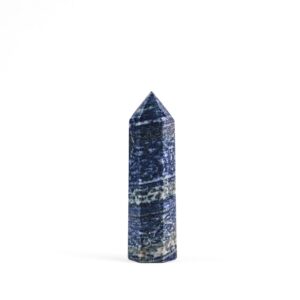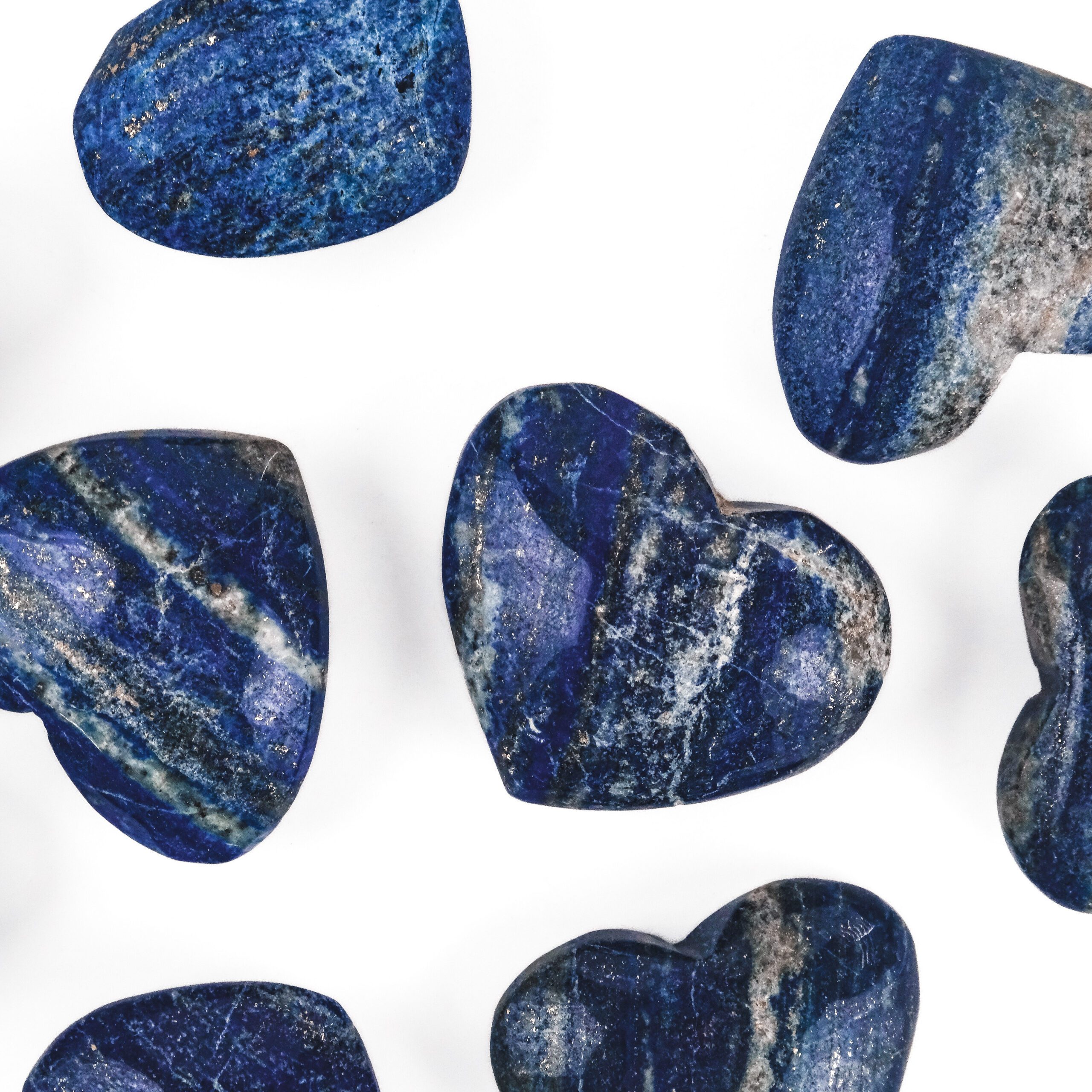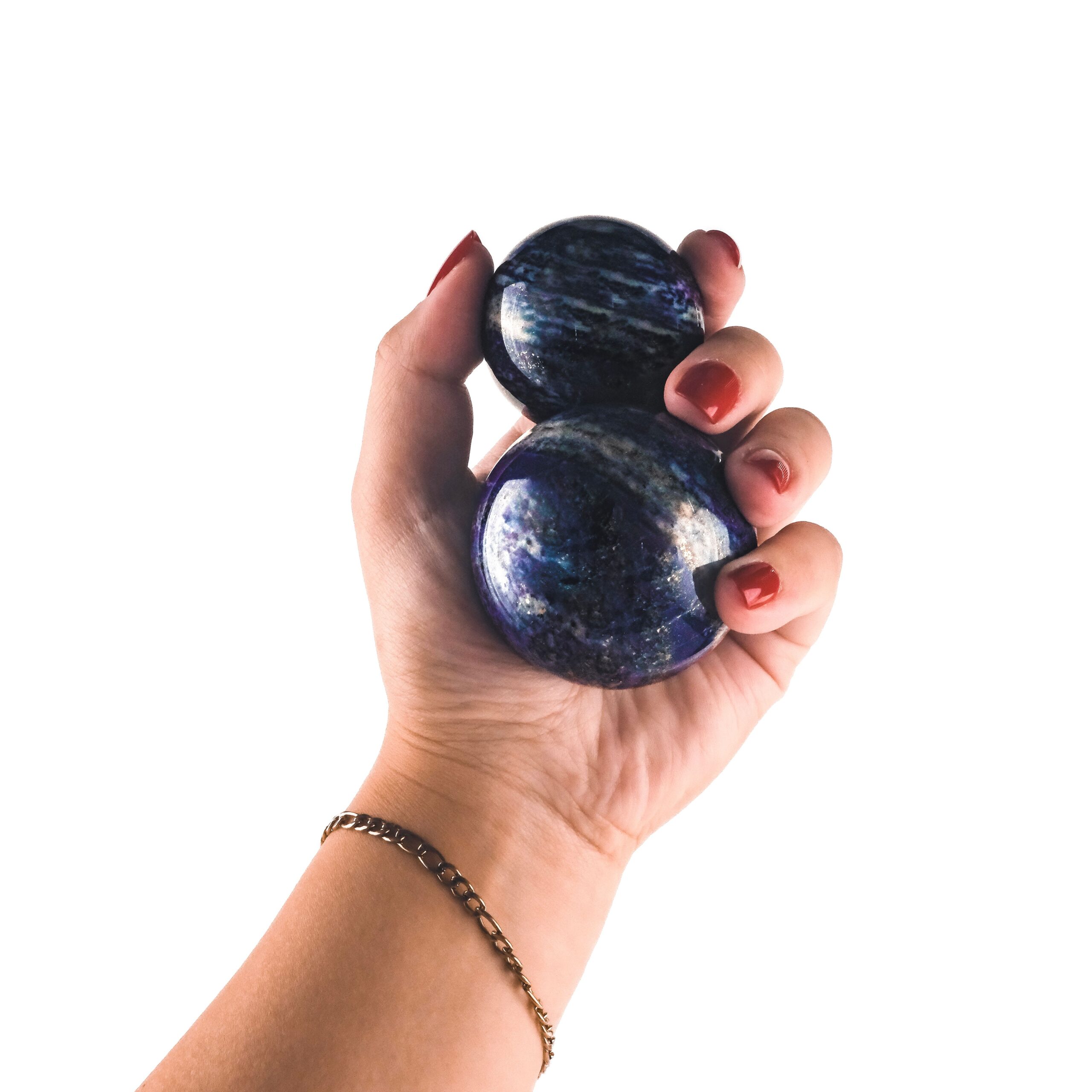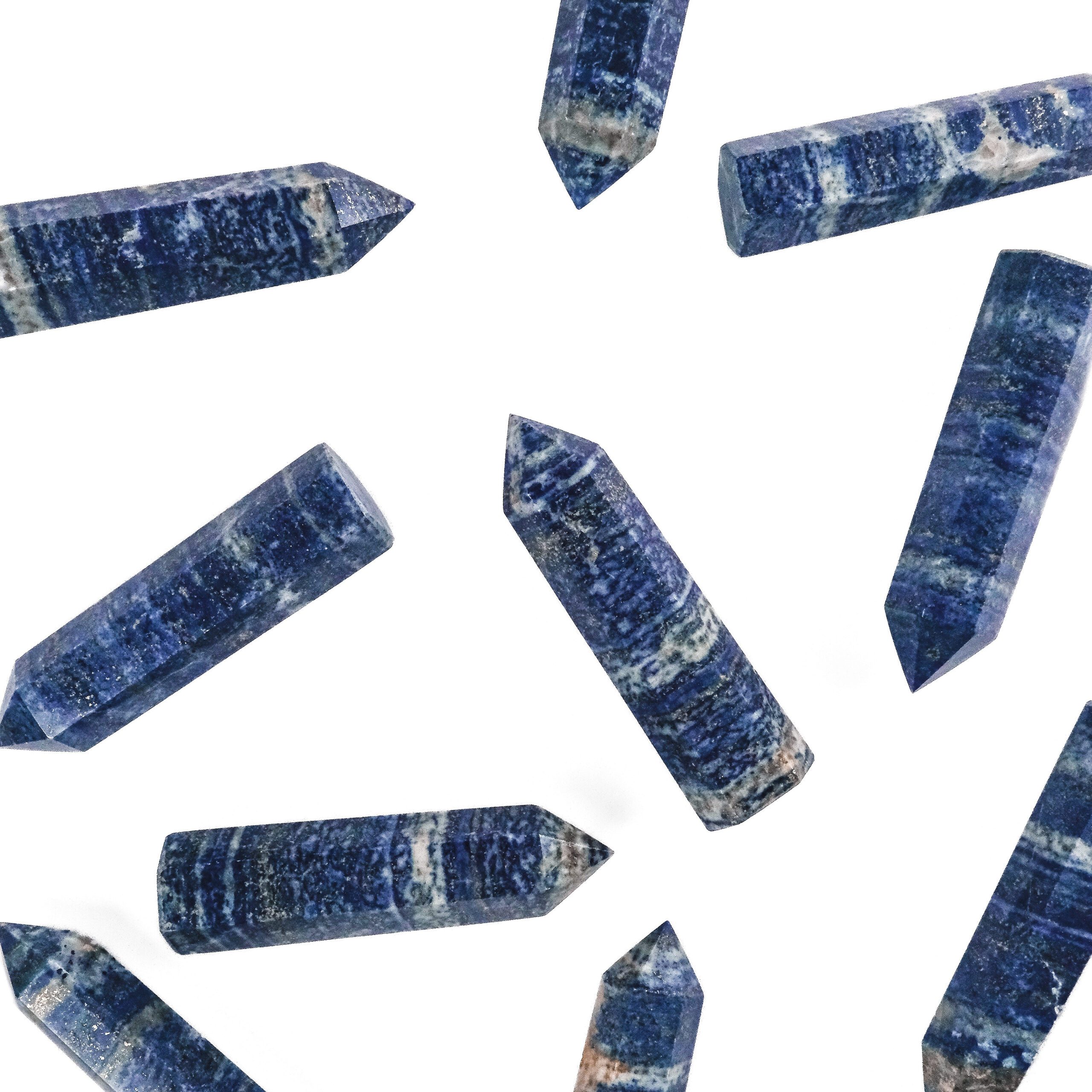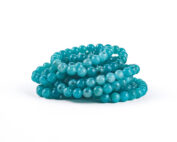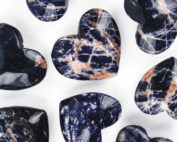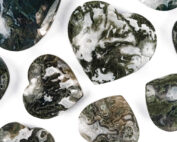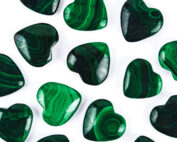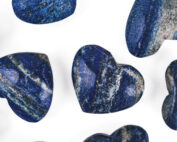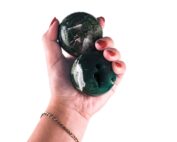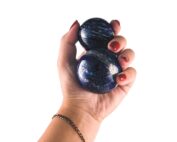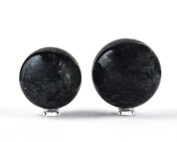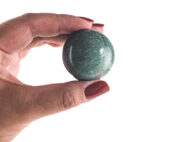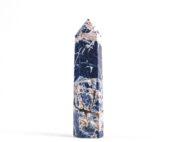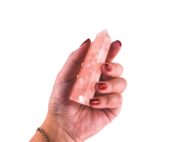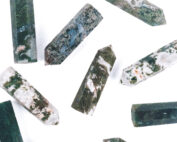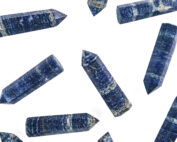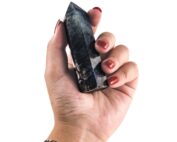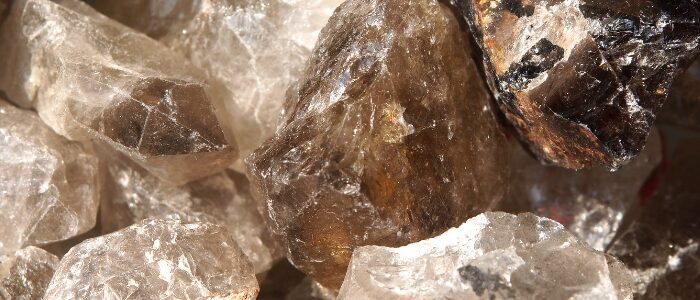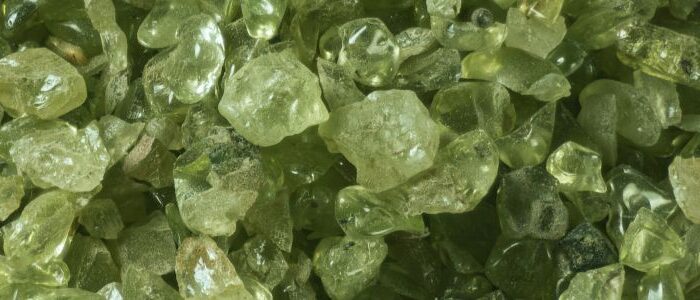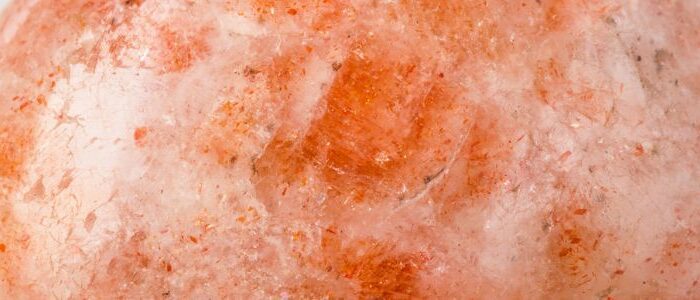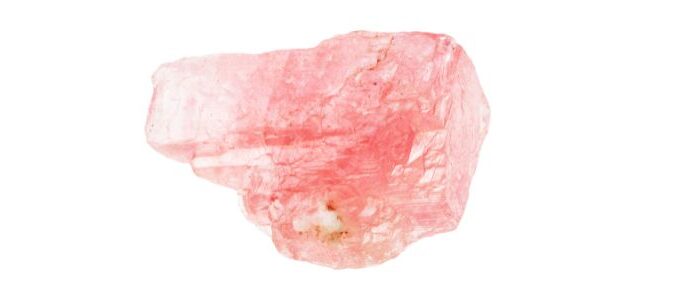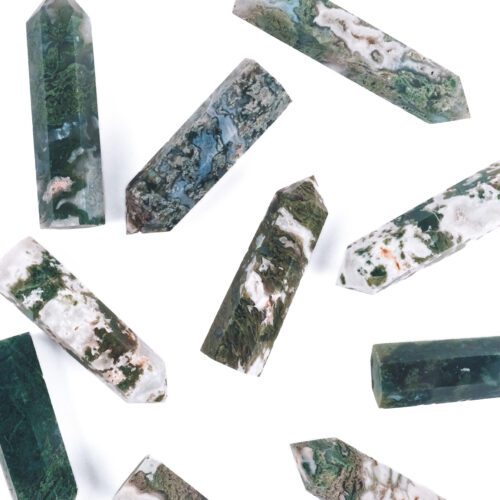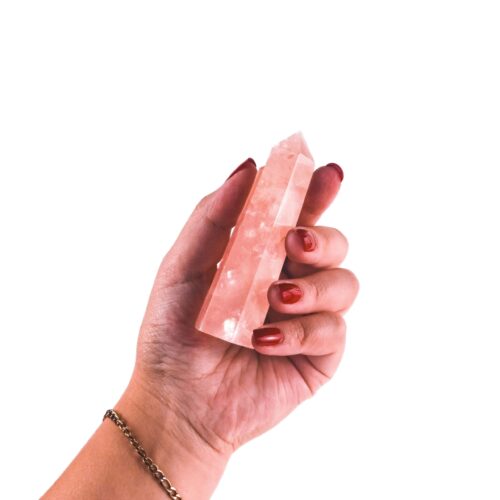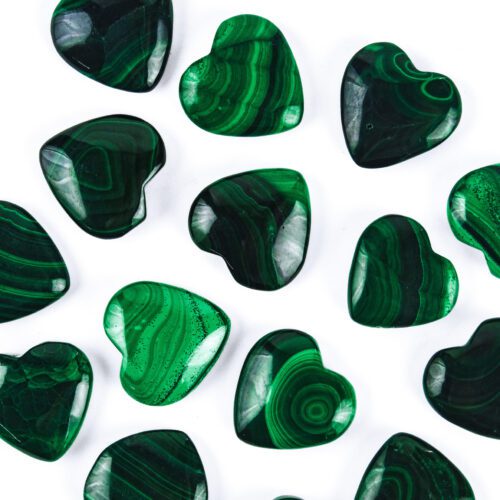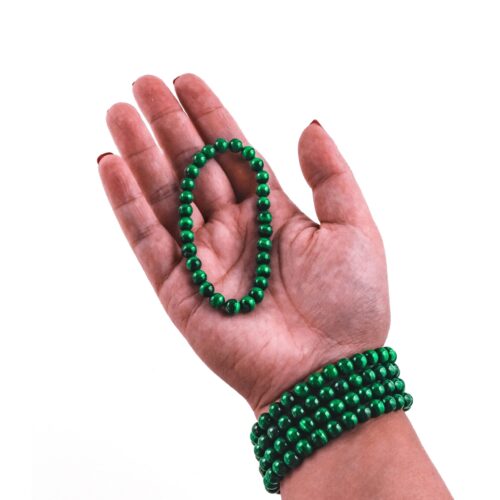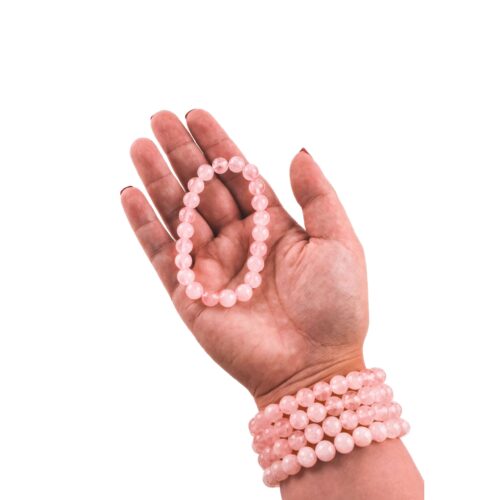Lapis Lazuli Crystal: Meaning, Healing Properties & Uses
APRIL 17, 2024
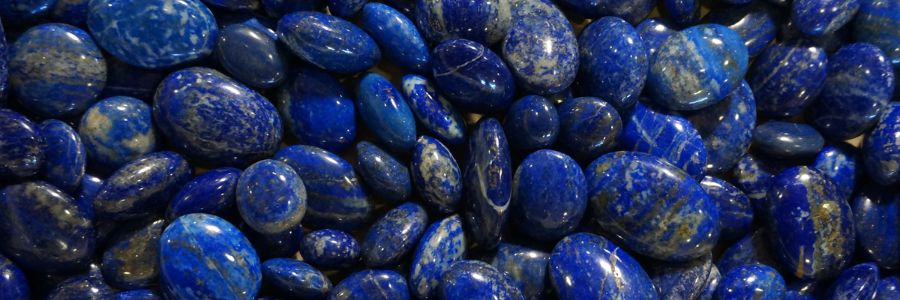
What is Lapis Lazuli?
The most straightforward way to define lapis lazuli is a semi-precious gemstone that has been admired for its mystical appearance and intense blue color for thousands of years. Despite its use in crystal healing where it is associated with wisdom and truth, lapis lazuli is technically a rock, and not classified as a crystal – as it is a substance composed of several minerals.
The unique mineral composition of this rock creates a dazzling effect, resembling the starry night sky. Lazurite, the main component of the stone is to thank for its deep blue color, and the golden celestial specks are the result of pyrite crystal inclusions.
Although lapis lazuli is technically a rock, for simplicity purposes, in this article we will be using the term “rock” and “crystal” interchangeably to refer to naturally occurring minerals.
Lapis Lazuli Pronunciation
The pronunciation of lapis lazuli is not overly difficult, it is enunciated as lah-pis lah-zoo-lee. The name comes from two very different cultures. “Lapis” is the latin word for “stone”, and “lazuli” is derived from the persian word “lazhuward” which means “blue.”
navigate this article
Lapis Lazuli Meaning & Healing Properties
The general meaning of lapis lazuli is mental clarity, self awareness, and protection – it’s no wonder this blue treasure is referred to as the “Wisdom Stone.”
Perhaps you feel drawn to the deep-blue color of lapis lazuli and its shimmery golden flecks but are wondering what it can do for you. Below are some of the key metaphysical properties and benefits of lapis lazuli.
MENTAL CLARITY & INTUITION
It’s thought that the deep blue hue of the stone can promote a sense of calmness and inner peace, opening up the mind for clarity and greater intuition.
SELF AWARENESS & COMMUNICATION
The enhancement of inner peace may allow one to better understand their personal thoughts, feelings, and desires, leading to greater self awareness and clearer communication.
CALMING
Gazing into the tranquil depths of the lapis lazuli stone is sure to bring about a sense of calm and relaxation.
INTUITION & CLAIRVOYANCE
Some believe that the stone can help to open and activate the third eye chakra which is associated with psychic abilities.
RELEASE TENSION & NEGATIVITY
The calming and soothing properties of lapis lazuli are believed to aid in the release of negative thoughts and energies.
PROTECTION
In crystal healing, some practitioners feel that blue lapis lazuli possess qualities that can protect the user from energy and thoughts, as well as psychic attacks.
MIGRAINE RELIEF
Tied to the belief that lapis lazuli may bring about relaxation and calmness, some feel that working with the stone can help provide relief from migraines and headaches.
Trending Products
Are there any Lapis Lazuli Negative Effects?
Now that we have covered the healing properties of lapis lazuli, you might wonder if it can also have any negative effects. From an energetic standpoint, lapis lazuli is incredibly safe. However, there are some physical dangers that may arise when interacting with lapis lazuli that need to be considered.
It is not recommended for lapis lazuli to come in contact with water, due to the presence of pyrite in the stone. When pyrite is exposed to water, a chemical reaction occurs, resulting in the production of iron oxide, aka rust. Rust is not something you’d like to consume (via crystal elixirs) or bathe with, so it’s best to keep your precious lapis lazuli stones away from moisture.
Products like lapis lazuli smoke pipes are also not recommended (other than for display pieces) because when heated, some crystal pipes have been found to cause smokers to inhale toxic chemicals, depending on the type of stone and the pipe’s manufacturing process.
Lapis Lazuli Properties & Physical Characteristics
Lapis Lazuli is a deep-blue metamorphic rock and a semi-precious gemstone whose aesthetic is reminiscent of a starry night sky. This little blue wonder typically consists of 3 colors: blue, white, and gold.
The blue color of lapis lazuli mainly comes from the mineral lazurite within the stone, but also from the minerals hauyne and sodalite. The white flecks in lapis lazuli stem from the mineral white calcite. The golden streaks in lapis lazuli come courtesy of the pyrite it contains.
MINERAL CLASS – Lapis Lazuli is composed of several different minerals, but primarily lazurite.
COLOR – These beautiful stones are primarily a vibrant blue color, with specks of white and/or gold. In terms of value, generally the more “solid blue” a lapis lazuli rock is, the more desirable it is.
HARDNESS – Lapis Lazuli’s hardness is rated a 5 to 6 on the Mohs scale of hardness. This rock is harder than a material like talc or gypsum, but not as hard as quartz or topaz. It’s quite resistant to scratching, but not indestructible and can be chipped if not cared for properly.
LUSTER – Dull in raw form, but can be polished to be more waxy or even vitreous. Luster can vary depending on the quality of the stone. Stones with plenty of pyrite inclusions will be shinier than those with fewer.
TRANSPARENCY – A fairly opaque stone, some specimens may be semi transparent (allow some light to pass through).
Sometimes, other gemstones, such as sodalite, get sold as lapis lazuli. Keeping an eye out for the golden flecks of pyrite will help you determine whether a piece is genuine or not.
Origin & History – Where is Lapis Lazuli Found?
Lapis Lazuli has been mined for over 6000 years. Ancient civilizations (like the Sumarians) associated the stone with gods and held it in high regard.
In Ancient Egypt, lapis lazuli was believed to carry the power of immortality, and was frequently ground up into pigment for paint and cosmetics. One famous use of this stone was on the death mask of King Tut, in combination with turquoise and carnelian. Over a thousand years later Queen Cleopatra also used lapis lazuli pigment, as blue eyeshadow.
When lapis lazuli is ground up into powder the pigment is called ultramarine, which was favored by many artists during the Renaissance. A famous example of such art is Michelangelo’s Sistine Chapel in Rome.
The world’s finest lapis lazuli is found in the mountain ranges of Afghanistan, where it has been revered for centuries. Chile and Russia also produce significant amounts of this gemstone, while smaller veins can be found in Canada, the United States and Pakistan.
Uses for Lapis Lazuli Crystals
So what is lapis lazuli used for? There are many different ways to work with this sparkly blue gemstone – whether you’d like to experience its reported spiritual benefits or simply enjoy the stone’s pleasing aesthetics. Here are some inspirations on how to use lapis lazuli.
AFFIRMATIONS
Hold your stone in your hands, close your eyes, and repeat one of the lapis lazuli affirmations below until you feel a shift in your energy:
- My intuition will guide me to where I need to be.
- My mind is clear. I know what I want and desire.
- I am free from negative energy.
- I can communicate my truth.
MEDITATION
As you meditate, hold your lapis lazuli in your hands, put it next to or in front of you, or place it on your throat chakra or your third-eye chakra.
YOGA
Gaze at a lapis lazuli stone on the end of your yoga mat to promote feelings of mental clarity and calmness during your practice.
INTENTION SETTING & MANIFESTING
Hold the stone in your hand while closing your eyes and thinking of an intention. When you open your eyes, it’s thought that the crystal is now “charged” with your intention.
BATHTIME
A regular bath becomes even more relaxing when you bring your lapis lazuli along. Just be sure to leave it on the ledge and not get it wet.
JEWELRY
Lapis Lazuli comes in many different types of jewelry. As this stone resonates with the throat and third-eye chakras, wearing it in the form of earrings or necklaces is a particularly great choice. But make sure to remove your jewelry in the bath or shower to keep your lapis lazuli away from water and moisture.
ON THE GO
Tumbled stones are perfect for tucking into pockets and purses to bring your stone with you wherever you go.
HOME DECOR
Fill your home with the energy of lapis lazuli by intuitively placing your stone wherever you feel called to. Alternatively, you can consult the ancient Chinese art of Feng Shui and use the Bagua energy map to determine where in your home the energy of your crystals can unfold optimally. Lapis lazuli falls under the category of “Knowledge and Self-Cultivation”, meaning it would be best-placed northeast in your home or left to your front door.
FOR YOUR CAREER
Bring your lapis lazuli to work with you. Tap into the stone’s communication and self expression qualities to help promote professional success.
CREATE A GRID FOR PROTECTION
Find a place such as your altar or a table, and arrange your lapis lazuli piece(s) together with some pieces of tiger’s eye, labradorite, and amethyst on there in a way that intuitively feels right to you. Imbue your grid with the intention “I am safe and protected”, and leave it there for as long as feels appropriate.
Caring for Your Crystal
All crystals love being taken good care of, as it allows them to keep radiating their beautiful energy out into the world. To look after your crystalline friends, you will want to regularly cleanse and charge them. There are many different ways to do this. The best will depend on the specific stone, as well as what methods you feel resonate the most with you.
How to Cleanse Lapis Lazuli
There are several ways to cleanse your lapis lazuli. Some options are provided below, simply choose the one that feels right to you. However, avoid placing lapis lazuli in water or cleansing it with salt.
SMUDGING – Use the smoke from burning sage to cleanse. Hold the stone in one hand and waft the smoke over it. It’s believed that this will cleanse and purify the stone.
SOUND THERAPY – Bells and singing bowls are a unique way to cleanse lapis lazuli.
MOONLIGHT – Place your stones under the light of a full moon to invite the moon’s energy to cleanse and purify.
How to Charge Lapis Lazuli
Some of the methods of charging your lapis lazuli overlap with those of cleansing it. Here are some easy ways to charge your lapis lazuli stone.
SUNLIGHT – Lay your lapis lazuli under the sun for a few hours. Be sure not to forget about it though, as prolonged exposure can lead to fading.
MOONLIGHT Place your stone under the light of a full moon to invite the moon’s energy to recharge and energize the stone.
SOUND THERAPY – Bells and singing bowls are a unique way to activate lapis lazuli.
OTHER CRYSTALS – Should you have some clear quartz or selenite available, use their energy to charge your lapis lazuli. Simply place the stones near each other.
Lapis Lazuli Chakra Placements
What chakra is lapis lazuli associated with? Traditionally, lapis lazuli’s energy most resonates with the third eye chakra (enhancing tuition by balancing this chakra) as well as the throat chakra (associated with communication and self expression).
The body can be thought of as an energetic temple, with seven unique chakras that dance along the spine. These chakras are the body’s energy hubs – absorbing, transforming and radiating energy throughout the body. By keeping them in balance, we can tap into our inner wisdom, ignite our passions and elevate our wellbeing.
Birthstone & Zodiac
When it comes to birthstones, there are various traditions that use different stones. Depending on those traditions, lapis lazuli can be considered the birthstone for both the months of September and December, aligning it with the zodiac signs Libra and Sagittarius.
Pairings
Sometimes, you might wish to pair your lapis lazuli with other crystals, for example, when you create a grid. The best way of pairing your crystals is by letting your intuition guide you to choose your crystals. However, if you would like some inspiration, here are our recommendations:
1. TIGER’S EYE & LAPIS LAZULI
Like lapis lazuli, tiger’s eye is a protective stone with a powerful and activating energy that aids transformation. Similar to lapis lazuli, tiger’s eye also charms us with its dazzling look: where the golden pyrite in lapis lazuli winks at us, tiger’s eye flashes its mesmerizing stripes at us.
2. AMETHYST & LAPIS LAZULI
Also a protective stone, amethyst has the additional benefit that it has a cleansing effect, allowing it to “wash away” any old energies that lapis lazuli might bring to the surface for transformation.
3. LABRADORITE & LAPIS LAZULI
Another protective stone with a fascinating shimmer, labradorite also resonates with the throat and the third-eye chakras like lapis lazuli. It also assists in processes of transformation.
A Final Note
Lapis Lazuli is a powerful semi-precious stone with a strong protective energy that can support you in uncovering your authentic self and expressing your truth.
As long as you handle it carefully and do not expose it to water, it is a wonderful stone that can support you on your spiritual journey in many ways.
shop crystal database
continue learning


